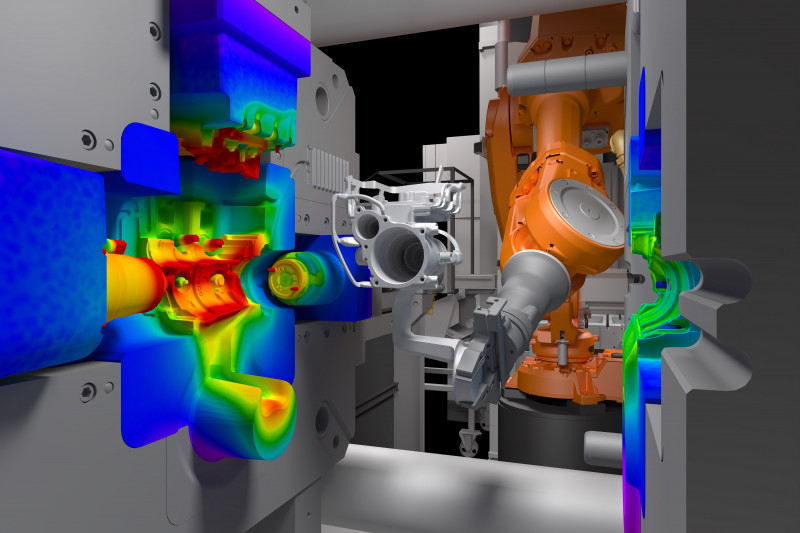Introduction
Aluminum die casting is a widely-used manufacturing process in which molten aluminum is injected into a mold under high pressure to produce complex, near-net-shape parts. The quality and efficiency of the die casting process heavily rely on the accuracy and durability of the mold. In this guide, we will explore the key considerations and steps involved in creating an aluminum die casting mold that ensures precision and efficiency.
Design Considerations
Before diving into the mold creation process, it is essential to carefully analyze the design requirements of the part to be produced. Understanding the part’s size, shape, and structural features will help in determining the type of mold and the necessary modifications required. It is crucial to take into account factors such as draft angles, fillets, and undercuts to ensure proper mold release and avoid defects or damage during the casting process.
Material Selection
The choice of mold material is critical in achieving a high-quality aluminum casting. The mold must possess sufficient strength, thermal conductivity, and wear resistance to withstand the high temperatures and repeated thermal cycles during the casting process. Commonly used mold materials for aluminum die casting include tool steels, such as H13, and hot work steel grades like H11 and H21. These materials offer excellent hardness, toughness, and thermal stability.
Mold Construction
The construction of an aluminum die casting mold involves several stages, starting with pattern making. The pattern, typically made of wood, is a replica of the desired part and serves as a template for the mold. The pattern is then coated with a refractory material like silica sand to create a mold cavity. The mold cavity, also known as the cope and drag, is made up of two halves that fit together precisely.
Once the mold cavity is ready, it is necessary to incorporate appropriate gating systems, including runner systems, sprue, and vents, to facilitate the flow of molten aluminum into the mold. The design of the gating system should ensure a balanced and uniform filling of the mold cavity to prevent defects like porosity or cold shuts.
To enhance mold life and reduce wear, various surface treatments and coatings can be applied to the mold. These treatments, such as nitriding or chrome plating, enhance the mold’s surface hardness, corrosion resistance, and thermal conductivity, leading to improved casting quality and mold longevity.
Controllo di qualità
Throughout the mold creation process, it is vital to implement stringent quality control measures to ensure precision and efficiency. Regular inspections and measurements should be conducted to verify the mold’s dimensional accuracy and alignment. The use of advanced technologies such as coordinate measuring machines (CMM) can help in accurately assessing the mold’s conformity to design specifications.
Additionally, performing comprehensive mold trials and simulations before mass production is crucial. This allows for the identification and rectification of any potential issues, such as air entrapment or filling imbalances, that may affect the final casting quality.
Maintenance and Repair
Proper maintenance and timely repair of the aluminum die casting mold are essential to ensure its long-term performance. Regular cleaning, lubrication, and inspection of the mold can prevent the accumulation of debris, minimize wear, and identify any potential issues early on. In case of mold damage or wear, prompt repair or refurbishment should be carried out to avoid production downtime and maintain consistent part quality.
Conclusion
Creating an aluminum die casting mold that guarantees precision and efficiency requires careful consideration of design requirements, material selection, and proper mold construction. Implementing thorough quality control measures and maintaining the mold’s condition are equally crucial. By following these steps and best practices, manufacturers can produce high-quality aluminum castings consistently and optimize the overall die casting process.
-

- Parti UAV tixomolding in lega di magnesio pressofusione
-

- Componenti pressofusi OEM per il telaio del sedile automobilistico
-

- volante in pressofusione di alta precisione per autoveicoli
-

- Parti thixomolding su misura Componenti UAV con lavorazione CNC e trattamento superficiale
-

- Parti pressofuse in lega di alluminio e magnesio Copricatena per automotive
-

- Prodotti personalizzati per fonderia Componenti per e-bike Cerchi in lega di magnesio

 0086-750-5616188
0086-750-5616188 +86 13392089688
+86 13392089688 sales@zhongmei-tech.com
sales@zhongmei-tech.com








